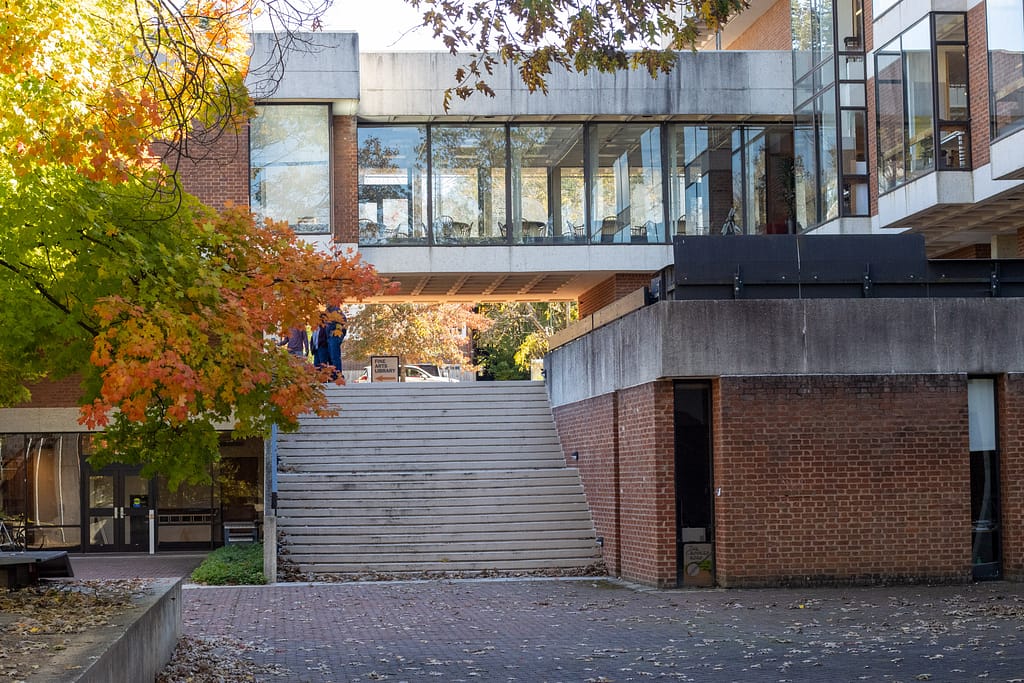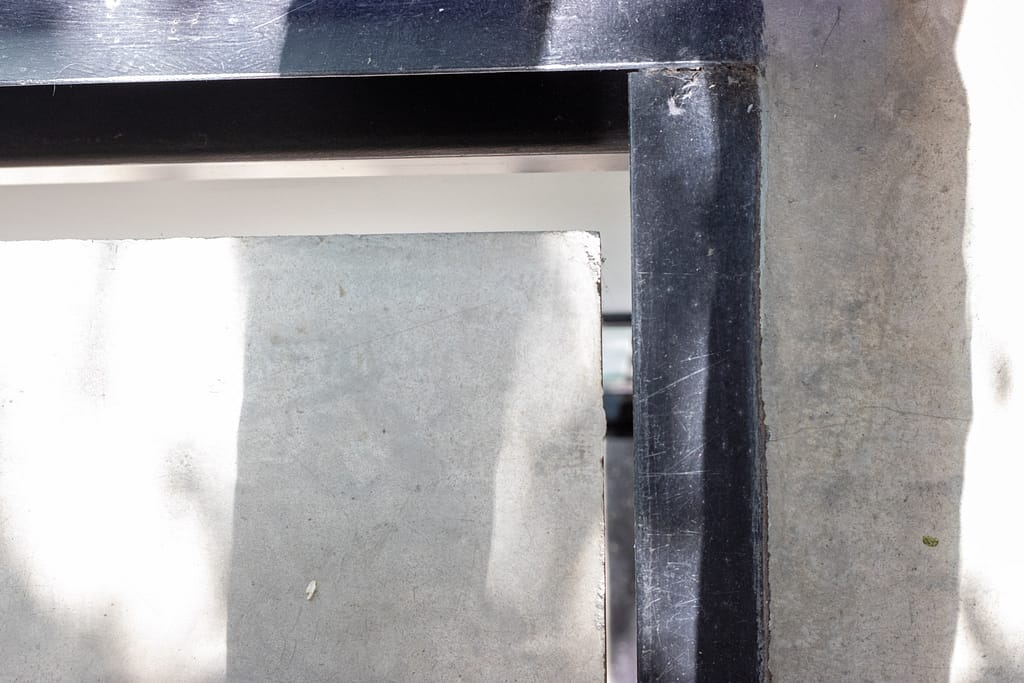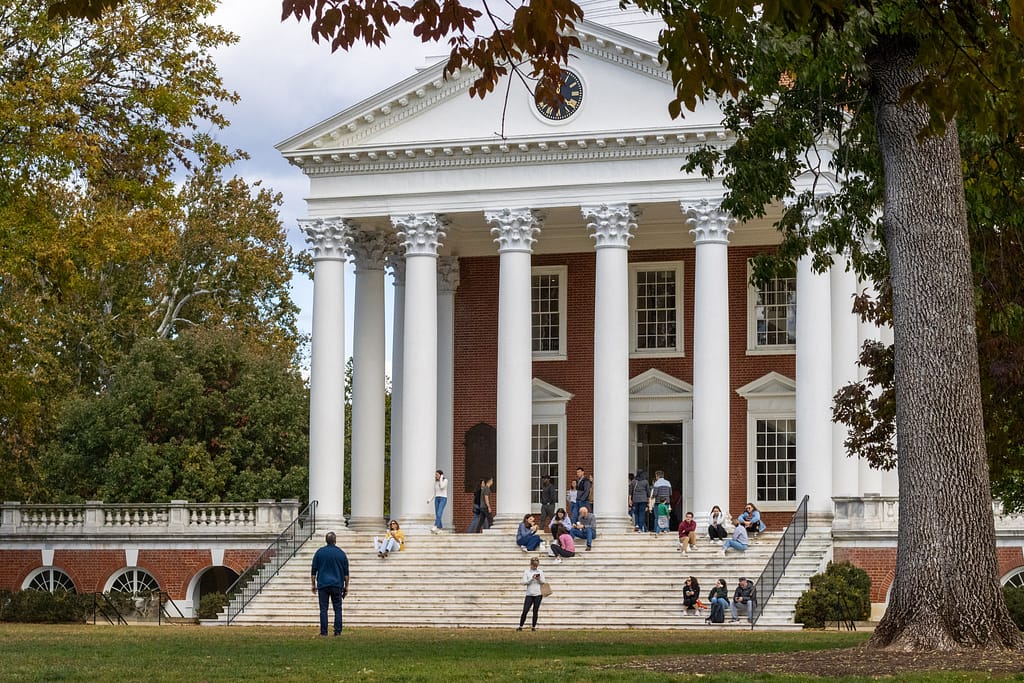I haven’t visited Charlottesville since my eleventh-grade tour while exploring undergraduate colleges. That was fourteen years ago. Since attending Virginia Tech, conversations about Charlottesville and UVA have become a frequent staple in my life. There is an ongoing comparison between the two schools. They both exist in and around a small town. They are rivals in sports and have similar-sized architecture programs. In the 2019-2020 Design Intelligence rankings, UVA edged slightly higher than Virginia Tech in “most admired graduate architecture schools” claiming the 11th spot compared to Virginia Tech’s 13th. However, it’s worth noting that these rankings have since been permanently discontinued due to perceived issues with their methodology (source: link). Intrigued by its architectural treasures, a friend from the architecture program and I embarked on a day trip for a self-guided architectural tour of Charlottesville.
The City
Blacksburg and Charlotteville share similarities but also stark differences. Both towns boast a population of around 45,000 and are nestled in the Blue Ridge mountains. Charlottesville has UVA and Blacksburg has Virginia Tech. Their student populations are close, but VT has about 9,000 more students.
Immediately upon exiting the highway, the differences between Blacksburg and Charlottesville are apparent. Charlottesville exudes a historical charm that Blacksburg doesn’t. The roads are narrower and the houses sit snug against the sidewalk. The influence of Thomas Jefferson, evident in landmarks like Monticello; his home imparts a distinct neoclassical character to the town. It is located just outside of Charlottesville and is considered to be one of the finest examples of the early neoclassical style in the United States. The campus and the University exist because of Jefferson, who not only founded it in 1819, but was also the architect behind it. UVA along with Monticello, was named a UNESCO World Heritage Site in 1987.
Pedestrian Mall

Charlottesville’s pedestrian mall, one of the longest in the United States, epitomizes what downtowns should aspire to be. Lined with an abundance of shops and restaurants, it’s an eclectic mixture of both restored, renovated and modern buildings. It is tree lined and easily walkable. There is a vibrancy of outdoor enjoyment that one would find in a European city. We were there on a Saturday and it was filled with people of all ages and families, not just college students like you’d find in downtown Blacksburg. Blacksburg should copy the blueprint that Charlottesville laid out for it.
One of my favorite buildings on the pedestrian mall sits just at the end, or the beginning depending on the way you are coming from. It is the Omni Charlottesville Hotel, an unassuming brick building, with a huge glass façade reminiscent of an 80s office building. It’s not very attractive from the outside, however, once you step in to the main lobby, you are greeted by a large open atrium, bathed in natural light and greenery.


The Campus

The campus is a short walk from the pedestrian mall. You first have to make your way down W. Main Street, which is where most of the new development appears to have taken place. Sitting between the old of the pedestrian mall and the campus is an area that attempts to blend to its historic surroundings through the use of brick. However, it feels more suited to a city like Arlington, than the town of Charlottesville. Its large scale makes it feel out of touch with its neighbors.
UVA’s campus is beautiful. It feels more like a forest with buildings nestled within. We visited at the end of October and caught the peak of the Fall foliage. It’s more compact than Virginia Tech, resembling the old town of Georgetown more than a college campus. This lends an exploratory feel, discovering hidden areas and niches around campus. At Virginia Tech, there’s an abundance of land and space. You can see what’s coming before you get to it. Our main goal was to see W.G Clark’s extension to Campbell Hall, UVA’s school of architecture. Everything else was a bonus.
W.G. Clark is a modernist architect who primarily practiced around the Virginia region. He is beloved by some of the professors at Virginia Tech and he argues for the construction of architecture that is at one with its landscape, an architecture between the necessary junction of culture and place. I think his words and ideas contradict the actual architecture he builds. While I admire his work, especially after having visited his extension to Campbell Hall at UVA, to me his work disregards place. Most of his structures are cubic, modernist volumes that sit on the landscape, rather than being of the landscape.
Campbell Hall Extension

W.G Clark’s Campbell Hall extension added a mini tower and entrance that serves as the new entrance to the school. It stands as a masterclass in design and detail, with meticulous attention paid to every detail. The stair tower that acts as the main interior circulation is gorgeous. I thought every moment about.





Jefferson’s “Serpentine Wall”
The “serpentine wall,” aka a crinkle-crackle wall flanks UVA’s mall and is considered to have been brought to the U.S. by Thomas Jefferson. They are only one brick thick and because of their zig-zag pattern, use less brick and mortar. Having heard of it during my first year in graduate school, seeing it during our self-guided tour was a must. Also, walking around the campus, you couldn’t miss it.

Jefferson’s Rotunda
The Rotunda is the most iconic building at UVA. It is the centerpiece of the academic village/lawn and sits as the main orientation point on campus. It was modeled after the Pantheon in Rome. It is in the neoclassical style, which looked back to the Greeks and Romans. It dominated U.S. architecture and is the style of almost all federal buildings (click here to read about D.C.’s Brutalist architecture) in D.C. and almost all banks, courthouses and town halls across the U.S.

Memorial to Enslaved Labors
The memorial is the newest addition to UVA’s campus and sits at a main thoroughfare. Like an open bowl, it’s nestled into the landscape and is reminiscence of Maya Lin’s Vietnam War Memorial in Washington D.C. It consists of two rings, an inner ring and an outer ring. On the inner ring, is a timeline of slavery at the University and the names of the 4,000 enslaved people known to have worked on the University’s grounds. It’s impressive and stands out against the backdrop of the rest of campus. I’m not sure Virginia Tech would allow something like that on campus, as every new building needs to have a certain percentage of Hokie Stone. VT is going with conformity and uniformity to create a campus where every building looks the same.



















